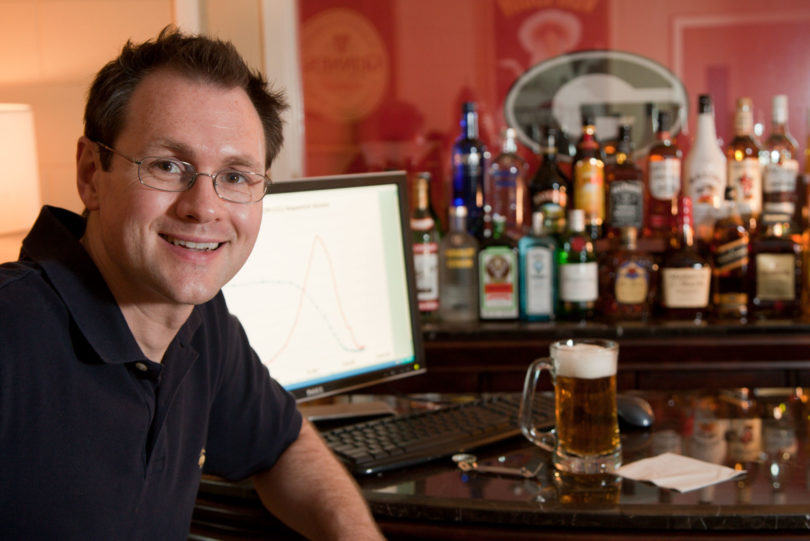Research led by a psychologist at UGA shows that behavioral economic analysis may lead to an improved understanding of craving for alcohol and other drugs.
This method of studying how craving alters the way a person values a drug is fairly new, but it may help assess cravings more accurately and contribute to more effective ways to defeat addictions.
The research was published in the journal Addiction.
The classical perspective on craving’s role in addiction is that over time excessive alcohol or drug use leads to increasingly persistent desires. Ways to use craving as a predictor of post-treatment relapses, have been unclear.
“The role of craving in the motivation of drug users has been controversial because of ambiguous findings and challenges in defining craving itself,” said James MacKillop, lead author on the research and a member of the department of psychology. “The field of behavioral economics is a hybrid of psychology and microeconomics and has the potential to address a number of the inherent limitations we have seen in studying craving. One of the reasons for the ambiguity may be related to measurement problems. Behavioral economics translates subjective desires into more objective terms, like number of drinks consumed and dollars spent, and shows real promise in finding better ways to study and understand craving.”
The study involved 92 university students who were “heavy drinkers,” meaning at least 21 drinks a week for men and 14 for women. The subjects were not given anything to drink, but underwent a laboratory assessment after being poured a glass of spring water and after being poured a glass of beer.
In both contexts, subjects related their craving for alcohol and estimated how much they would drink based on an increasing price scale.
The presence of beer increased craving for alcohol, but also increased the relative value of alcohol in behavioral economic terms. Subjects reported they would drink more alcohol at low prices, they would spend more money in total on alcohol and they would continue to drink at higher prices.
While this may seem a matter of common sense, behavioral economic methods have not been extensively applied to understand craving in the past. The new information may be useful in understanding the paradoxical behavior exhibited by addicts who commonly vacillate from wanting to quit drinking, smoking or using other drugs to reversing course and continuing to use.
More broadly, behavioral economics may have diverse applications to alcohol and drug misuse, from improving measurement in research to informing policymakers with regard to tax policy.
“Assessing craving using behavioral economic variables gives us a different and more complete understanding of how craving and decision-making interact,” said MacKillop. “We believe this work is both interesting and exciting and has the capacity to help us understand craving much better than we have before.”
According to the U.S. Department of Health and Human Services, in 2001, heavy drinking was reported by 5.7 percent of the population aged 12 or older. Among those 12 to 17, an estimated 17.3 percent used alcohol in the month prior to the survey interview.
Thus the stakes for understanding craving as it relates to addiction are high.





